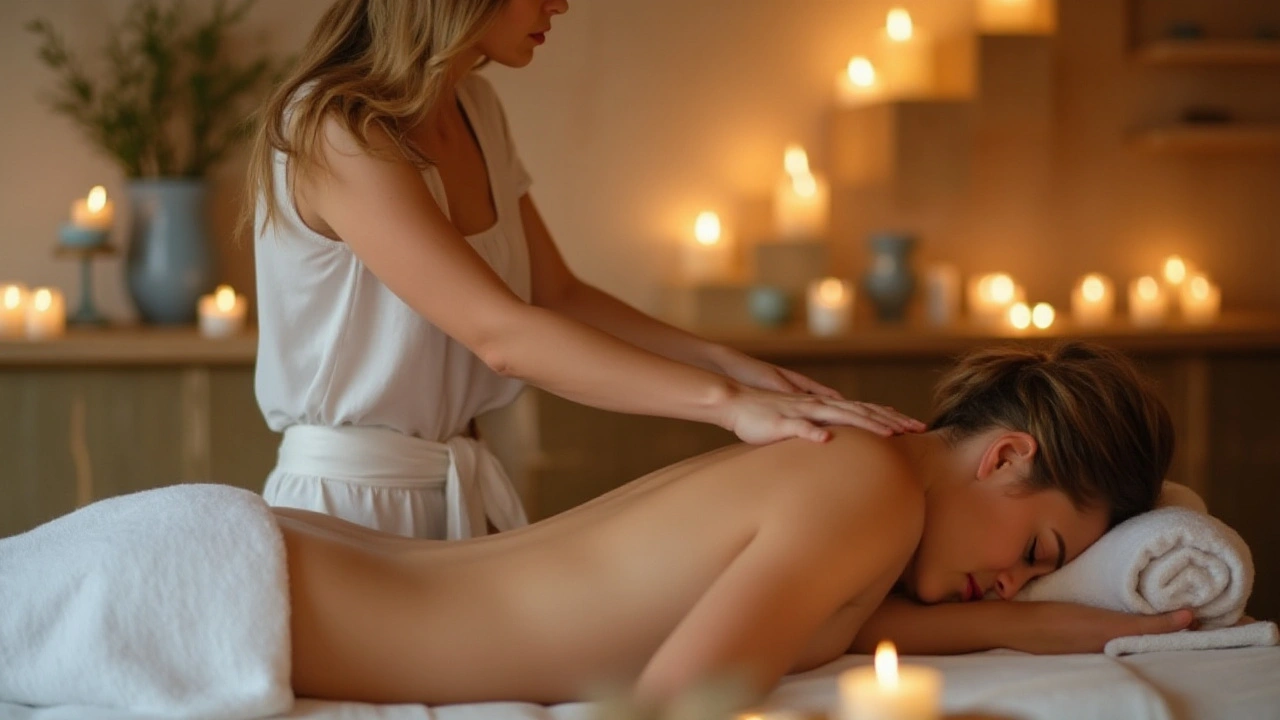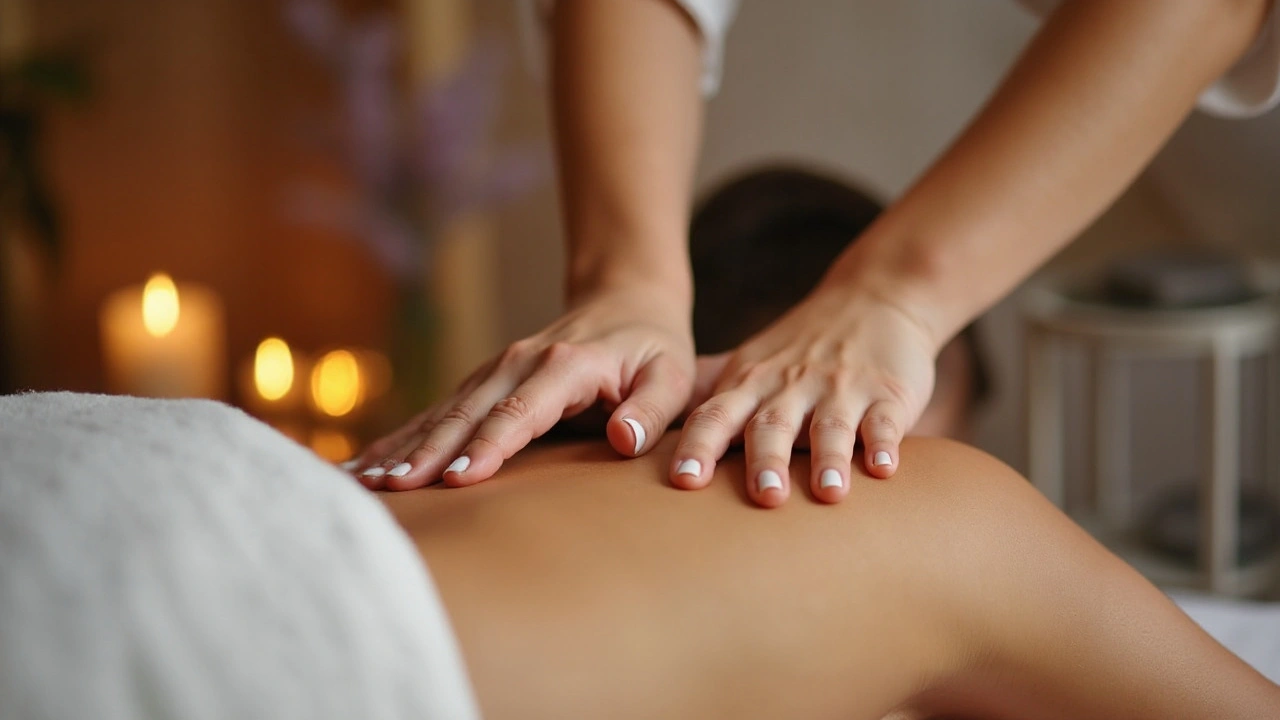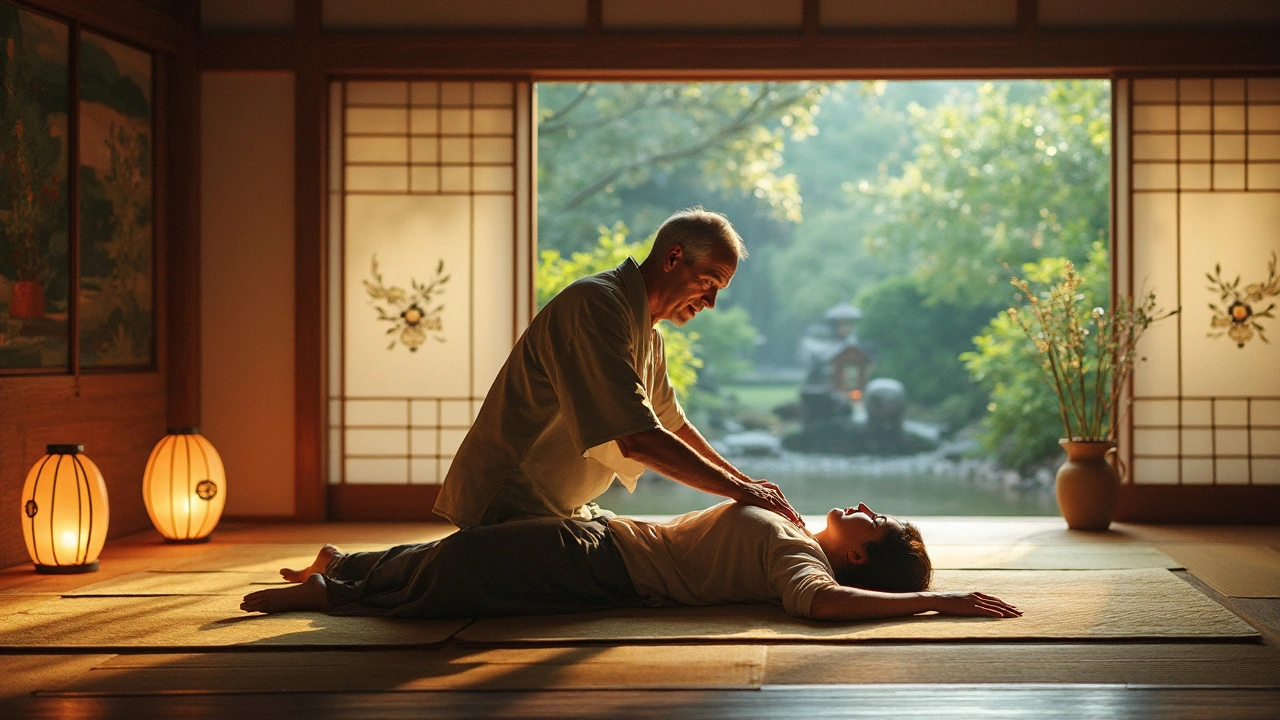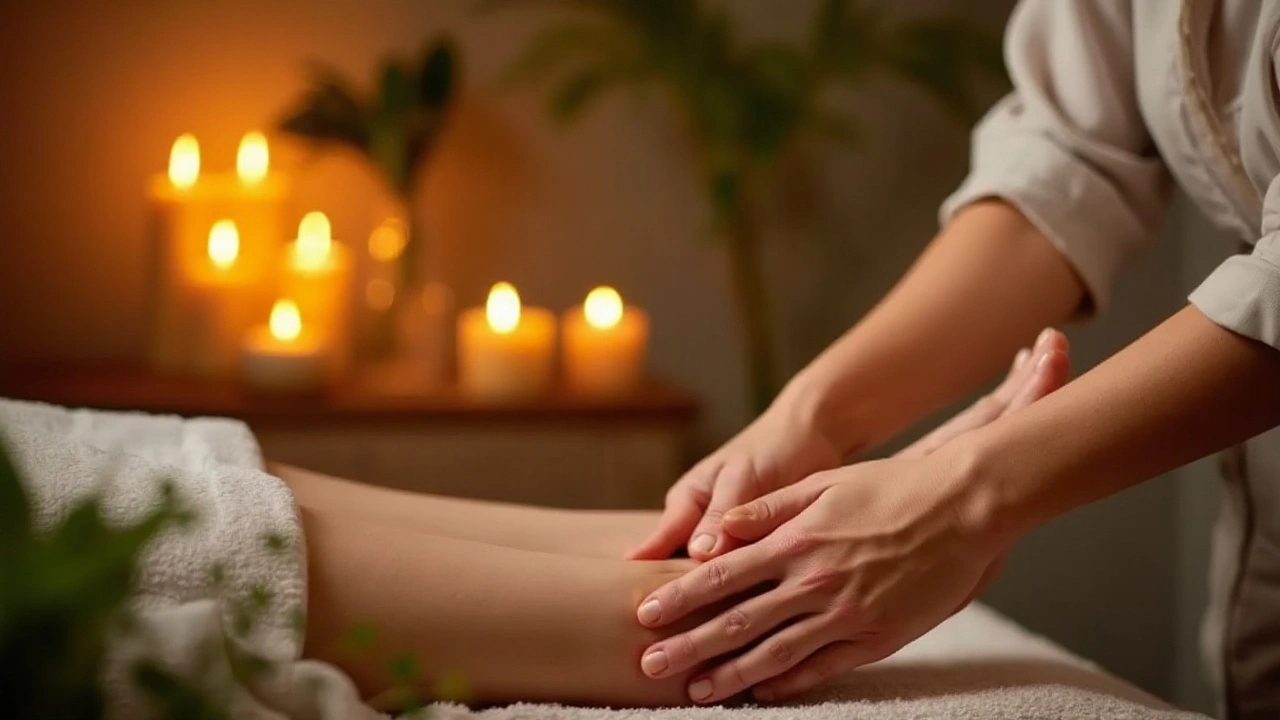Exploring the Wonders of Body to Body Massage: What to Expect

Body to body massage is more than just a relaxing escape. It is a unique and intimate therapy that involves the masseur using their own body to massage the client. This type of massage employs skin-on-skin contact to create a nurturing and soothing experience.
Understanding what to expect can help you get the most out of your session. Whether it's your first time or you're a regular, knowing the steps involved and the benefits can enhance your experience. In this article, we will delve into the wonders of body-to-body massage, shedding light on everything from preparation to post-massage care.
- Understanding Body to Body Massage
- The Benefits of Body to Body Massage
- What to Expect During a Session
- How to Prepare for Your Massage
- Tips to Make the Most of Your Experience
- Aftercare and Post-Massage Tips
Understanding Body to Body Massage
When we talk about body to body massage, we're delving into a unique, intimate form of therapy. Unlike traditional massages that rely on hands and sometimes elbows or feet, body to body massages utilize the masseur’s entire body. This type of massage is renowned for its skin-to-skin contact that creates a deeper, more soothing experience.
The concept of body to body massage is rooted in ancient practices, particularly from Asian cultures. These massages were initially designed to foster a strong spiritual connection and provide holistic healing for both body and soul. In modern times, they have evolved to cater to different needs including stress relief, muscle relaxation, and an enhanced sense of well-being.
A body to body massage typically begins with the client lying on a comfortable, cushioned surface. The masseur then uses his or her own body, usually covered in oil, to glide and press against the client's body. The massage involves long, sweeping strokes and can sometimes include rhythmic movements that help in reducing tension and promoting relaxation. The use of oil not only reduces friction but adds to the soothing sensation, making it easier for the masseur to glide over the body.
It's important to communicate with your masseur about your comfort level and any specific areas that require attention. Communication ensures that the session is tailored to provide the maximum benefit. According to recent studies, body to body massages can significantly lower cortisol levels, the hormone responsible for stress. This is one reason why many people opt for such massages as part of their wellness routine.
“Body to body massage offers a unique way to relax and reconnect with your own body,” says Dr. Jane Larkspur, a renowned wellness expert. “The entire process helps to increase mindfulness, reduce stress, and enhance physical and emotional well-being.”
History and Cultural Significance
Massage therapies have been part of human culture for centuries. The ancient Greeks and Romans were known for their love of massages, often using them after physical activities to help athletes recover. In many Asian cultures, body to body massages have religious and spiritual connotations. They are often used in rituals to cleanse the body and spirit alike. Over time, the practice has evolved and altered to suit modern lifestyles but its core essence remains the same.
Styles and Techniques
There are various techniques within the realm of body to body massages. Some therapists incorporate elements of Swedish massage, known for its long, flowing strokes, while others might employ deep tissue techniques to target and relieve muscle strain. No matter the style, the foundation rests on creating a harmonious rhythm between the masseur and client. The goal is to create an intimate, yet professional environment that fosters relaxation and healing.
Another fascinating aspect is that body to body massages can differ widely between practitioners. Some might include elements of aromatherapy, using essential oils to elevate the experience. Others might use different textures or temperatures, such as warm stones or cool compresses, to enhance blood flow and relaxation. The variety is one of the reasons this type of massage is so special, as it can be customized to meet individual preferences and needs.
The Benefits of Body to Body Massage
Body to body massage offers a plethora of benefits that extend beyond the immediate pleasure of the session. One of the most significant advantages is the deep relaxation it provides, both mentally and physically. The massage benefits include the reduction of stress and anxiety levels, which helps improve overall mental health. This not only allows you to enjoy a moment of tranquility but also aids in better sleep patterns, making you feel refreshed and more energetic.
Another remarkable benefit is the alleviation of muscle tension and stiffness. The unique nature of body to body massage ensures that every part of your body receives attention, promoting improved blood circulation. Enhanced circulation can aid in delivering oxygen and essential nutrients to tissues and organs, facilitating more efficient muscle recovery and reducing pain. This is especially valuable for those suffering from chronic pain or recovering from injuries.
No other therapy can quite match the intimate human connection that a body to body massage provides. The skin-on-skin contact stimulates the body’s natural release of oxytocin and endorphins. These “feel good” hormones play a vital role in lowering stress levels and boosting your mood, creating a sense of euphoria and well-being. The emotional bond formed during the session can be therapeutic, helping to combat feelings of loneliness and depression.
A renowned massage therapist, Dr. Laura Berman, states, “The human touch is not only comforting but also essential for our emotional and physical health. Body to body massage taps into this need, providing clients with a deeply nurturing experience.”
Those who seek beautification benefits will also find body to body massage beneficial. Regular sessions can contribute to healthier, more radiant skin. The natural oils used during the massage nourish the skin, keeping it hydrated and smooth. The gentle yet firm pressure applied helps to stimulate lymphatic drainage, which can help with reducing puffiness and improving skin tone.
Interestingly, body to body massage can also have a positive impact on your immune system. The relaxation and reduction in stress hormones can boost your body’s ability to fight off illnesses. According to a study published in the International Journal of Preventive Medicine, regular massages can lead to significant improvements in immunity markers. This goes to show that there are far-reaching benefits that extend well beyond the massage table.
In addition to these benefits, body to body massage also serves as a gateway to mindfulness. During the session, you become more in tune with your body’s needs and responses, fostering a deeper connection with yourself. This heightened state of awareness can pave the way for healthier lifestyle choices and improved mental clarity.
Many clients find that the benefits of a body to body massage can last for days, if not weeks. It’s a holistic therapy that addresses the physical, emotional, and mental aspects of well-being, making it more than worthwhile. Whether you seek relief from physical ailments, emotional comfort, or simply a moment to unwind, this therapy offers a transformative experience that can enrich your life in numerous ways.

What to Expect During a Session
Walking into a body to body massage session can feel like stepping into a sanctuary. From the moment you enter the room, you'll notice a serene atmosphere designed to relax your mind and body. The lighting is usually dim, and soothing music may be playing in the background. The massage table or mat is covered with fresh, soft towels, setting the stage for a comforting experience.
Before the session begins, you'll have a brief consultation with the masseur. This is an important step where you can discuss any areas of tension, pain, or specific needs you have. It’s essential to communicate openly because this helps tailor the session to address your unique requirements. If it's your first time, the masseur will explain how the session will proceed, helping to ease any apprehensions you may have.
Once the consultation is over, you'll be guided to shower to ensure a clean and refreshing start to the massage. Cleanliness is very important in maintaining a hygienic and pleasant environment. Some spas even offer luxurious showers with aromatic body washes to enhance your experience. After your shower, you'll lie down on the massage table or mat, and the session begins.
The masseur will use warm, nourishing oils to facilitate smooth skin-on-skin contact. These oils not only help in reducing friction but can also hydrate and nourish your skin. The massage itself involves a series of fluid movements where the masseur's body presses against yours. This method can effectively relieve muscle tension, improve circulation, and induce a deep sense of relaxation. You may find that the massage switches between light, gentle strokes and more firm, deeper pressure depending on your preferences and needs.
During the session, it's crucial to communicate with your masseur. Feel free to let them know if the pressure is too much or too little, or if you feel uncomfortable at any point. Open communication ensures that you get the most from your session. Some people find that their bodies naturally respond positively to the physical contact, while others may need time to adjust to the experience.
As Dr. Judith Orloff, an expert in mind-body connection, once said, "Physical touch has the power to release oxytocin, a hormone that promotes trust and emotional well-being." This is particularly true for body to body massage, where the physical closeness can create a deep sense of emotional and physical well-being.
Once the massage is complete, you’ll be given time to rest and rehydrate. Many spas offer herbal teas or infused water to help flush out toxins released during the massage. Taking a few moments to sit quietly after the massage can also help your body assimilate the benefits more effectively. Before you leave, the masseur may offer some aftercare tips, such as drinking plenty of water and avoiding strenuous activities for the rest of the day.
How to Prepare for Your Massage
Preparing for a body to body massage can set the stage for a more enjoyable and effective session. The first step is to ensure that you are well-hydrated. Drinking water not only helps to keep your muscles hydrated, making them more pliable and easier to work on, but it also helps to flush out toxins that can be released during the massage. Aim to drink at least a glass or two of water a few hours before your appointment.
Next, consider taking a warm shower before heading to your session. The heat can help to relax your muscles, making it easier for the masseur to work effectively. Clean skin also enhances the tactile experience of the massage, allowing for the smooth application of oils and lotions. It's a good practice to avoid applying any heavy lotions or perfumes, as these can interfere with the oils used during the massage.
Wear comfortable, loose-fitting clothing to your appointment. This ensures that you can easily undress and redress without feeling restricted. Most massage therapists will provide a robe or towel, but being comfortable as you transition in and out of these garments can make a difference in your overall experience. Also, remember to remove any jewelry and store it in a safe place before your session begins.
It's important to communicate with your masseur about any specific needs or concerns you might have. Whether it's an area of your body that needs special attention or a preference for the amount of pressure used, letting your masseur know in advance can help tailor the session to your liking. This communication can also include any previous injuries or medical conditions that may affect how the massage is performed.
Arriving a few minutes early can also make a big difference. This allows you to take your time in settling in, filling out any necessary paperwork, and discussing your expectations with your therapist without feeling rushed. A calm and relaxed mind can significantly improve your ability to enjoy and benefit from the massage.
Lastly, consider your post-massage plans. It's advisable to avoid heavy meals or strenuous activities immediately after your session. Your body will appreciate some downtime to absorb the benefits of the massage. Light stretching, drinking water, and even taking a short nap can help enhance the positive effects of the massage session.

Tips to Make the Most of Your Experience
To truly benefit from a body to body massage, there are some key tips that can help elevate your experience. One of the first things is to communicate your needs and preferences clearly with your therapist. Discuss any specific pain points, desired pressure levels, or areas to avoid before starting the session. This way, your therapist can tailor the massage to suit your needs and ensure optimal comfort and effectiveness.
Creating the right ambiance can also play a huge role in enhancing your relaxation experience. Arrive early to your appointment to allow time to unwind and mentally prepare. Relaxing scents like lavender or chamomile, calming music, and dimmed lighting can significantly contribute to a serene environment. Don't be afraid to ask your therapist to adjust these settings to match your comfort level.
Hydration is crucial both before and after your massage. Drinking plenty of water helps to flush out the toxins released from your muscles during the massage. This not only prevents soreness but also helps your body recover faster. It is advisable to avoid heavy meals and alcohol prior to the session to prevent any discomfort during the massage.
It is essential to wear appropriate attire when going for a body to body massage. Loose, comfortable clothing is ideal, as it allows you to relax and not feel restricted. Some spas may provide disposable undergarments or suggest that you receive the massage without clothing, but it is always important to do what feels most comfortable to you.
Another critical tip is to practice mindfulness during the massage. Focus on your breathing, and try to be present in the moment. This can significantly enhance the therapeutic effects of the massage. Deep, slow breathing can help you relax more deeply and reduce any tension you're holding onto.
Post-massage care is just as important. Give your body some time to rest and absorb the benefits of the massage. Light stretching, a gentle walk, or a warm bath can be beneficial. Most importantly, listen to your body. If you need more rest, don't hesitate to take it easy for the remainder of the day.
"The key to a great massage experience is in the details. The ambiance, therapist communication, and your personal mindset all come together to create a truly transformative session." - Dr. Jane Miller, Wellness Expert
Integrating these tips seamlessly into your massage routine can make a significant difference. A body to body massage is not just about physical touch; it’s about creating a complete sensory experience that nourishes both the body and the mind. So take the time to prepare, communicate, and relax, and you will find your massage sessions to be even more rewarding.
Aftercare and Post-Massage Tips
Once your body to body massage session is complete, the feeling of relaxation and rejuvenation should be embraced and extended. Proper aftercare allows you to maximize the benefits and helps your body adjust to the therapeutic work that was done. Here are some detailed tips on how you can take care of yourself following a massage session.
First and foremost, hydration is key. Drinking plenty of water after a massage is essential because massages can release toxins from your muscles into your bloodstream. Water helps to flush these toxins out, reducing the likelihood of soreness and fatigue. You might also consider herbal teas like chamomile or peppermint, which have additional calming properties.
Another tip is to engage in light stretching. Gently stretching your muscles can help maintain the looseness achieved during the massage. Focus on slow, gentle stretches that target the areas worked on during your session. This can prevent stiffness and prolong the feeling of flexibility and relaxation.
Resting is equally important. Your body undergoes significant relaxation and healing during a massage, so it is vital to give it time to recover. Try to avoid strenuous activities for at least 24 hours after your session. Even a short nap can be beneficial, as your body repairs itself most effectively during sleep.
Nourishing yourself with a healthy meal can also be beneficial. Consider foods rich in antioxidants like berries, nuts, and green vegetables. These can help your body recover more quickly and continue to cleanse itself from the released toxins. Avoid heavy, greasy foods as these can make you feel sluggish and counteract the positive effects of your massage.
“Massage therapy can improve overall health and wellness, and proper aftercare enhances these benefits,” says Dr. Theresa Larson, a renowned wellness expert.
Another excellent aftercare tip is to take a warm bath. Adding Epsom salts can further aid in removing toxins and relieve any lingering muscle tension. The warmth of the bath will help your muscles to continue relaxing. Stay in the bath for at least 20 minutes to reap the full benefits.
Additionally, it is beneficial to monitor your body's response to the massage. You might note any specific points of tension or discomfort. Keeping a journal of your experiences can be useful when you schedule your next session. Sharing this information with your therapist helps them tailor future massages to your current needs.
Listening to Your Body
Pay attention to how your body feels after the massage. Feeling a bit sore is normal, especially if deeper pressure was applied. Mild discomfort should dissipate within 48 hours. If you experience severe pain or bruising, contact your therapist promptly; this can indicate that the pressure used was too intense.
Regular Follow-ups
To maintain the benefits of a body to body massage, regular sessions can be very helpful. Monthly massages are a good starting point for consistent benefits, but this can vary based on individual needs and personal schedules. Having regular sessions can significantly enhance your overall well-being.
Post-massage care is an important aspect of the massage process that should not be overlooked. By incorporating these aftercare tips, you can maximize the therapeutic benefits of your session and promote long-lasting relaxation and wellness.





